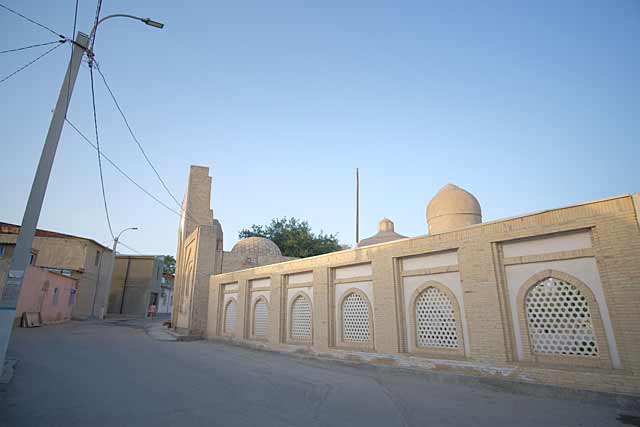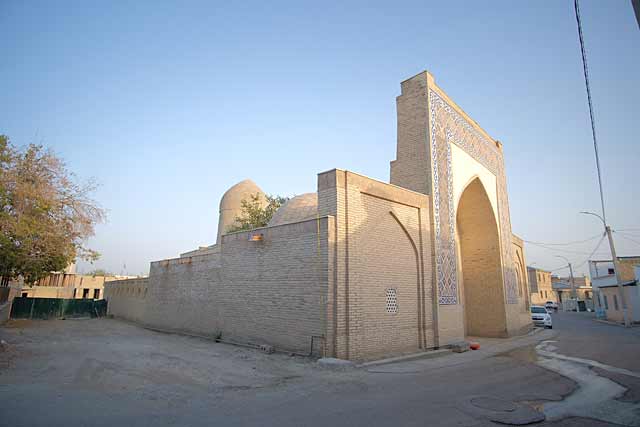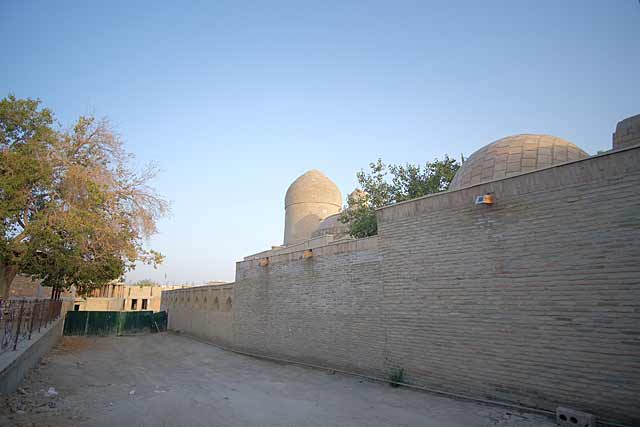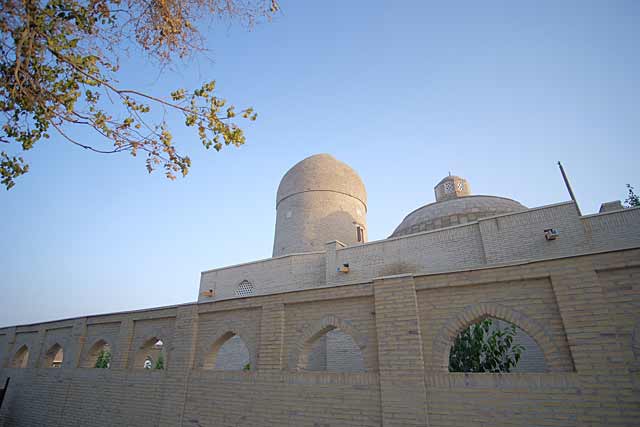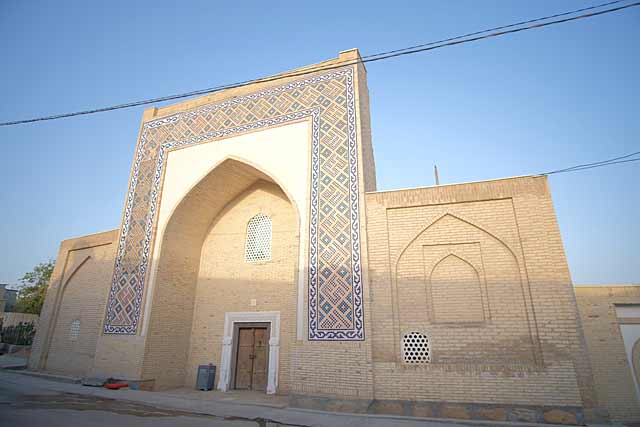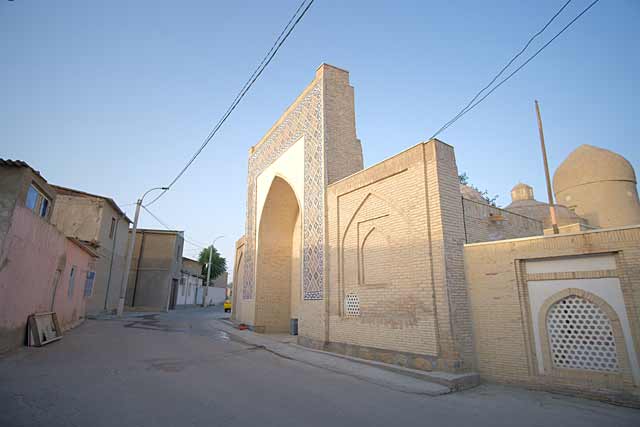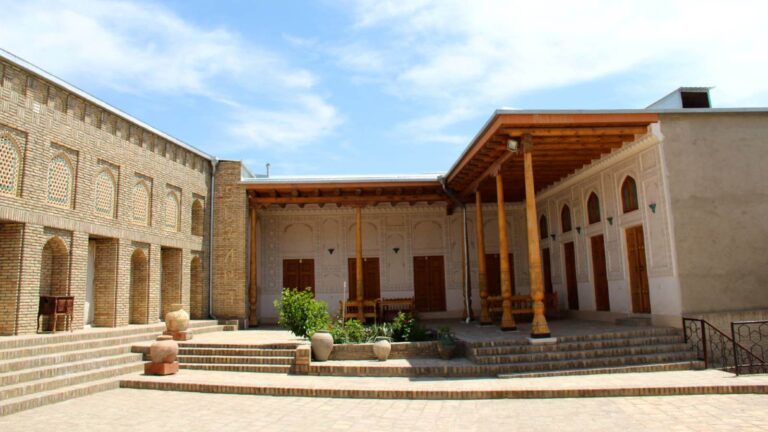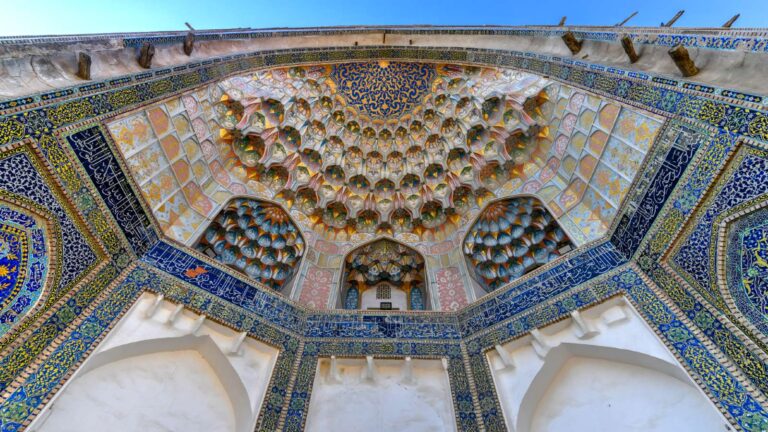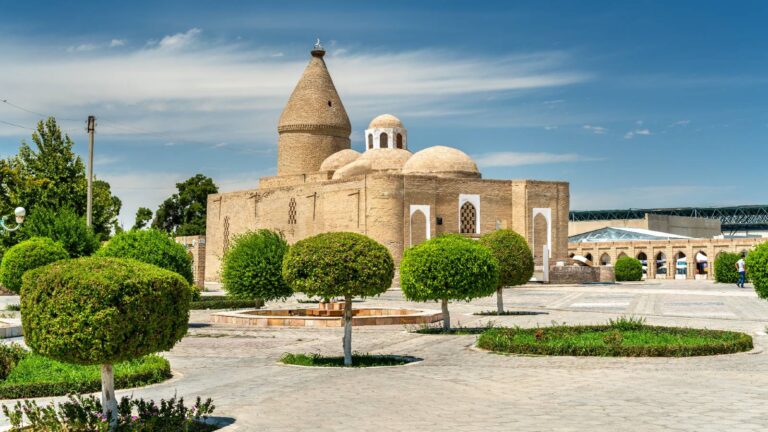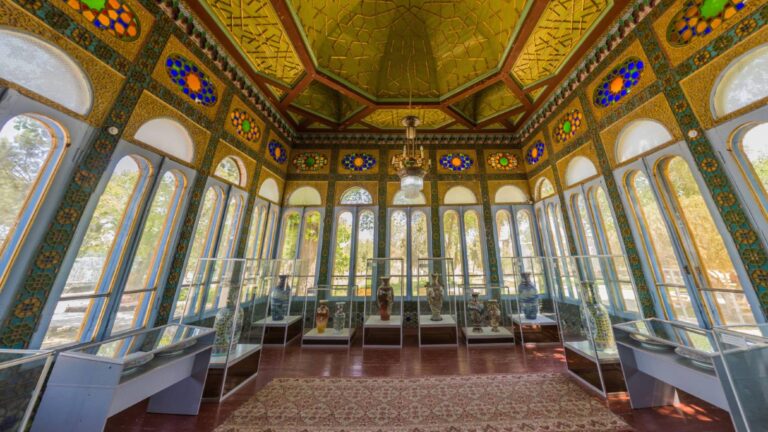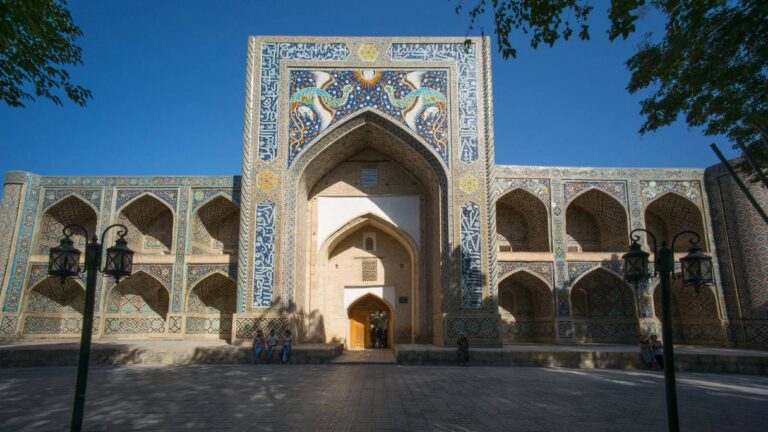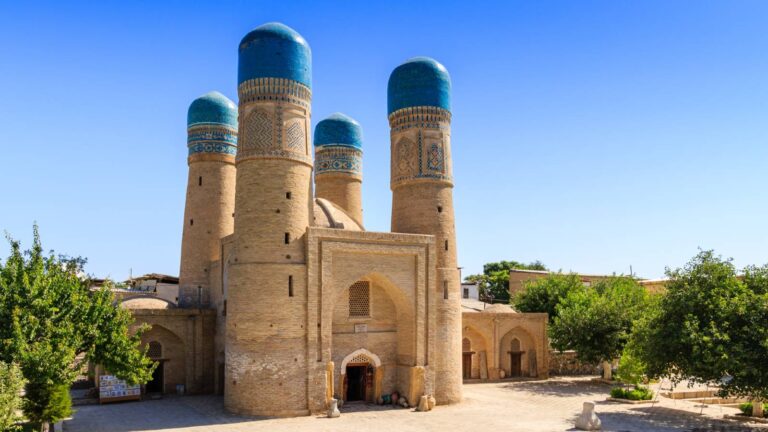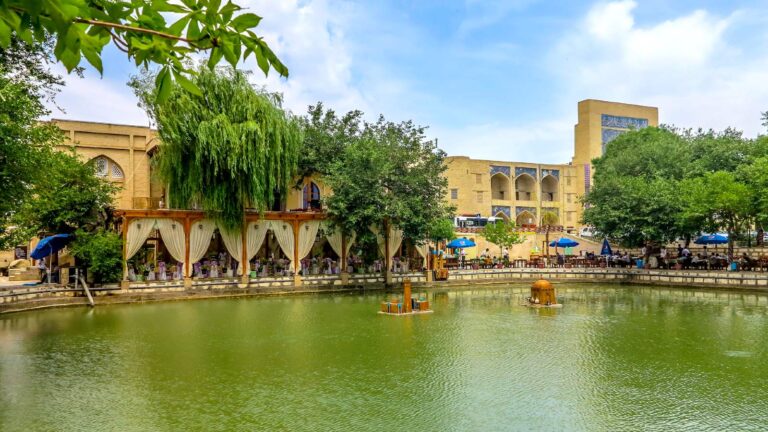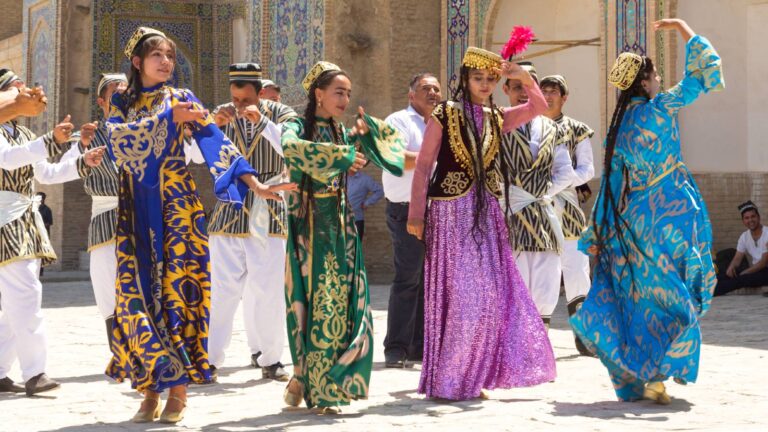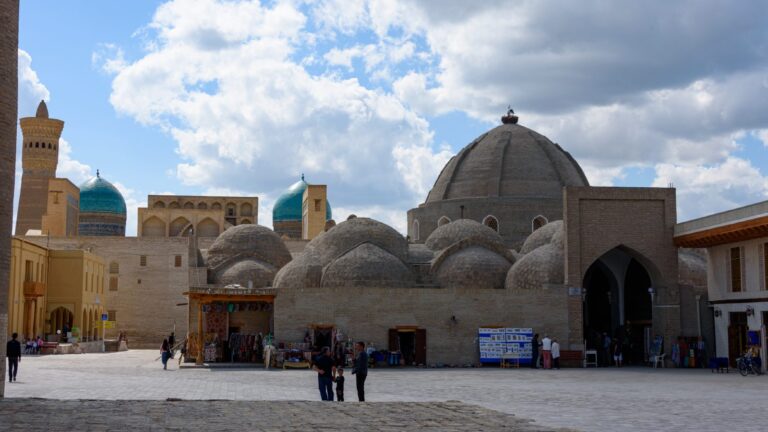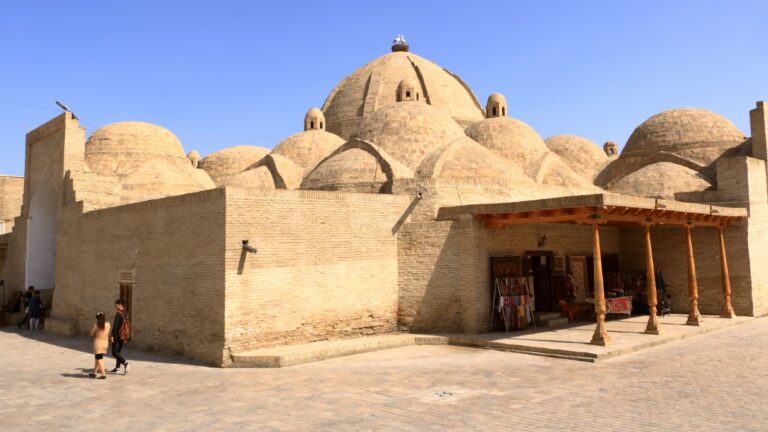Getting There
This unrestored mausoleum lies just south of the city’s main tourist zone, on the east side of Nomozgokh Street which leads eventually to the Namazgah Mosque.
One can get there from airport in 20 min by car.
From railway station in 45 min by car.
What to Expect
As with the dome, the ruin is devoid of decoration apart from the monumental pishtaq (main entrance), where some tilework remains. It comprises a blue-and-white border of stylized flowers, or vines, inset with a series of square Kufic inscriptions. The quality of the decoration is subpar compared with many of the city’s other mausolea, but is important from a historical perspective as it remains in an unrestored state.
History
The exact age of the structure is uncertain, but Badr and Tupev note that unpublished excavation reports from 1971-72 suggest the current edifice was constructed in the mid-16th century, with evidence of three other building periods, two earlier and one later.
From an architectural perspective the building’s prominent dome set upon a tall drum is indicative of Timurid-era architecture and recalls the Mir-i-Arab Madrassa (likely a contemporary structure) and the far earlier Gur-e-Amir Mausoleum in Samarkand (c. 1403-04).
The interior of the mausoleum is unfortunately off-limits to visitors due to its poor structural condition—the main dome is cracked and may be in danger of collapse. Originally it would have been clad in turquoise tiles, but none of these survive.
Facilities Available
The area around the mausoleum is one of the city’s largest and oldest burial grounds, and close to the site of a former market known as the “green bazaar”.

